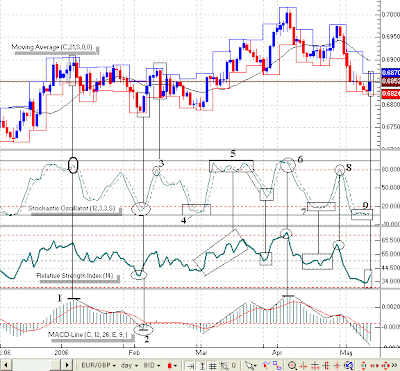Forex price are quoted in pips. Pip represents "percentage in point", and this is the 4th decimal place, that is 1/100th of one percent. In EUR/USD, a 3 pip spread is usually quoted as 1.2400/1.2403. If you are familiar with the quote prices of many currencies, you will discover that only the Japanese Yen is quoted in 2 decimal places. All other currencies are quoted in 4 decimal places.
For instance, the USD/JPY 4 pip spread is quoted as 113.00/113.04. This is like 1/100th of the Yen, compared to the 1/1000th ot most other currencies.
1. Base currency
When a base currency is the US Dollars, and the currency pair goes up, then it means that the US dollars has appreciated against the quoted currency.
Example, in the USD/JPY pair, if the first is 118.30, and after a while the price becomes 119.00, then it is said that the dollar have appreciated against the Japanese yen. It can also mean that the dollar is now strong enough to purchase more Japanese yen.
But there are certain exceptions to the general rule, such as the British Pound (GBP), Euro (EUR), and the Australian dollar (AUD). Example, when you see the GBP/USD quote price as 1.9000, this means that 1 British pound can buy 1.9000 US dollars. This also applies to the EUR/USD pair, and some others.
In this type of currency pair where the US Dollar is not the base currency, when there is a rise in the price of the quote, it means the dollar is getting weaker. This is because you need more money to be able to buy the base currency, such as the Euro, Pound, and Australian dollar.
And consequently, when the rise is also going down, it means the dollar is take a rise in value. And you need less US dollars to buy the base currency.
2. Cross currency
Such currencies pair that doesn't have the US dollar are usually referred to cross currencies, but the general rule are the same. Example, in the EUR/JPY of quote price of 125.90 means that the you need 125.90 Japanese yen to purchase 1 Euro. The basic rule is the same. If you get into the Forex trading, you will see that there is always a "bid" and "ask" price.
The bid quote is the price where you can go short the base currency in a particular trade, and the ask price is the price where you can go long on the base currency on a trade.
All these will get familiar to you when you stay on Forex for a while.














